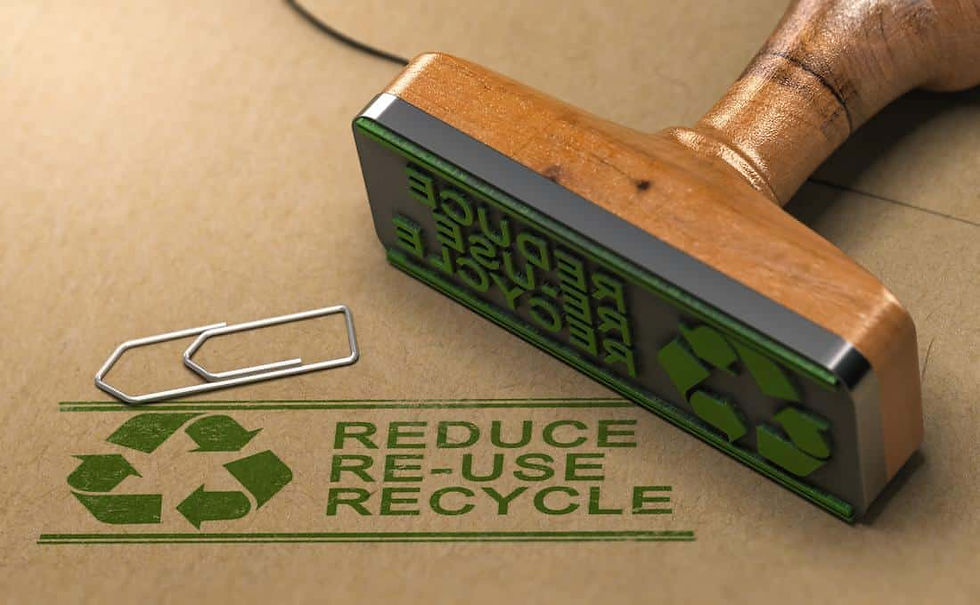How Rubber Mulch is Produced
- bdarling5
- Jul 20, 2022
- 4 min read
Updated: Jul 8, 2024
How is Rubber Mulch Produced?
As a homeowner, you are probably familiar with the various types of mulch that are available on the market. While there are many different materials that can be used as mulch, rubber mulch is becoming an increasingly popular option. But what is rubber mulch, and how is it made? In this blog post, we will take a closer look at rubber mulch and its manufacturing process.
By now, you're undoubtedly well aware of the numerous advantages of using rubber mulch on landscaping and playgrounds. Rubber mulch provides additional safety for children and is far superior to wood and sand chips. But are you knowledgeable of how rubber mulch is produced?
The first step is to collect old tires.
Rubber mulch is produced by repurposing discarded rubber tires. Rubber mulch may be created from almost any type of rubber tire, from little tires from toys to massive tires from trucks. It keeps tires out of landfills by reusing them as mulch.

Step two is to remove the steel rings from them.
Rubber mulch makers must first remove the steel bands found within old tires before turning them into mulch. These manufacturers frequently use magnet systems to ensure no steel remains in the tires. Using magnetic systems ensures that the mulch is as safe as possible.
Several types of magnetic separation equipment may be placed at essential stages in the recycling process to battle metal contamination and assure the purest recycled rubber product possible.
Rubber from recycled tires is used in a variety of applications. Playgrounds are one of the most visible areas where recycled tire rubber is used, either as rubber mats or as shredded rubber "mulch." Recycled rubber from tires is also used in livestock fencing, as a substitute for gravel, and in consumer products such as anti-fatigue and welcome mats.
The most difficulty in separating metal from shredded tires, such as steel wire, is maximizing the quantity of metal separated while reducing the amount of excellent rubber product lost. The separation of metal from rubber is best accomplished by multi-stage magnetic separation.

Step three involves shredding and coloring the tires.
Tires are crushed into tiny pieces of mulch once the steel bands have been removed. The shredding procedure is usually done in stages. The tire is broken down into 6 to 8-inch scraps during the first pass, and then the material from the first pass is broken down into smaller chunks of rubber in each successive step.
Rubber mulch is also tinted to give it a polished appearance. Colorants in liquid and powder forms enable producers to make goods that meet the expectations of their customers without sacrificing quality or safety. Colored mulch adds a "vibrant pop" to many landscapes, increasing curb appeal for many residences and businesses. Rubber mulch is often black, but producers may create it in practically any color they choose.

The rubber mulch is packed in the fourth step.
After the rubber mulch has been manufactured, it is bundled into large bags and sent to individuals who wish to utilize it. If you use rubber mulch in your playground, you'll need to calculate how much you'll need before making an order.
If you want to supply your playground with rubber mulch, then Rooster Rubber is the company for you. They offer as much or even more than what's needed in any color that suits our customer needs!

Did You Know?
Missouri Scrap Tire Legislation
By 1990, illegal scrap tire heaps had grown so vast and prevalent in Missouri that Senate Bill 530 was enacted by the state legislature. This legislation recognized scrap tires as a significant waste stream in the state and established a scrap tire fee to fund scrap tire oversight and management activities by the Missouri Department of Natural Resources, scrap tire cleanups by non-profit groups, educational programs/curriculum about solid waste management, and scrap tire surface material grants. In addition, every new tire sold at retail has a 50-cent trash tire tax.
Since the beginning of authorization and financing in 1990 -
More than 17.6 million junk tires from 1,386 scrap tire sites have been cleaned up, with all discarded tires correctly disposed of.
The government believes that around 159,000 scrap tires in 132 recognized locations throughout the state still need to be removed.
According to the government, there might be another 500,000 tires in dump sites around the state that have yet to be identified.
Approximately 2,000 scrap tire transporters have been licensed, with 60-70 operators acquiring new licenses or renewing current licenses each year.
Every year, inspections are performed at some of the state's estimated 6,000-7,000 scrap tire collecting locations.
Approximately 30 scrap tire processors have been authorized to convert complete scrap tires into shredded tires, tire chips, or crumb rubber for use as feedstock material in other applications.
Over 40,000 tons of scrap tires are expected to be diverted from the trash stream and turned into a range of playground surface materials, rubber mats, seats, tables, and other alternative applications for scrap tire materials by the end of 2021 according to the department.

trans%20sma.png)

Коментари